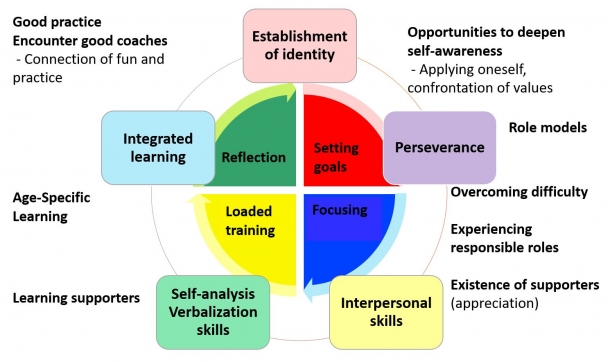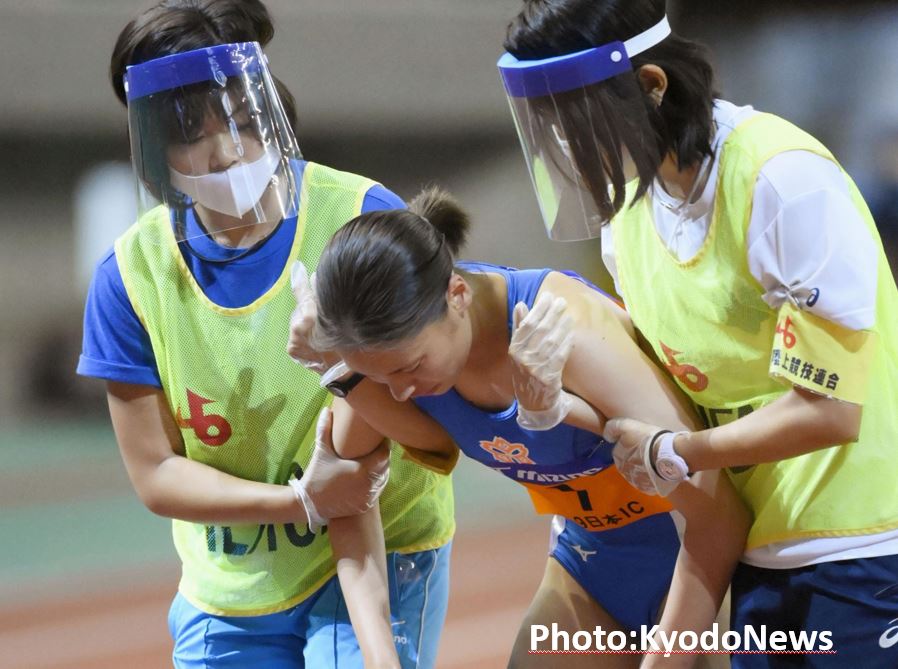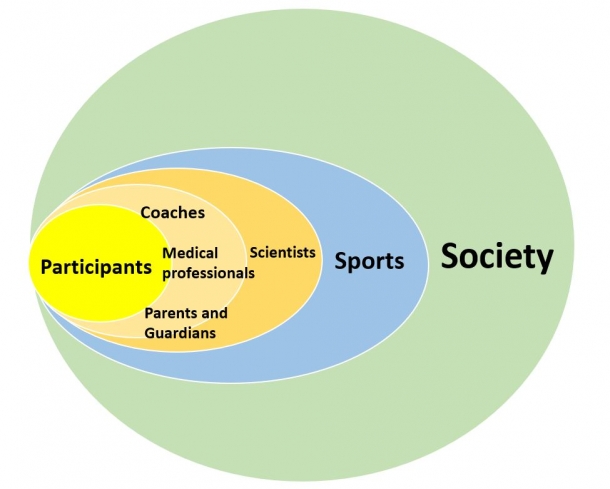We Need to Be Asking “Why?” More Than Ever Today
Fri, Oct 30, 2020-
Tags
We need to be asking “Why?” more than ever today
Professor Norikazu Hirose,
Waseda University Faculty of Sport Sciences
As I was writing this piece (August 2020), the media were presenting various opinions expressed on social media about a Covid-19 infection cluster in a school’s extracurricular club.
“Were appropriate safety measures taken?”
“Should sports activities be going on at a time like this?”
I’m sure readers of this column will have their own opinions too. This piece will not address every issue involved. However, this shows us that sports cannot be separated from society, that we must recognize sports as a part of society. Based on that, I feel that all of us involved in sports are called more than ever to question why we do sports, and to earn goodwill in society.
The value of participant sports in society
Recently I asked my daughter if she had ever cried watching sports. She told me that she cried and took courage from watching a DVD of the Japan women’s national football team winning the 2011 World Cup. Even though she didn’t watch in real time, the athletes’ joy and tears surely did that to her. Emotion is contagious.[*1] It is known that people actually feel happier when they watch sports.[*2] So sports affect the emotions of people watching, and they can also surely change people’s behavior. Society is composed of people. If people can grapple with issues with courage and positivity, then can’t that drive positive growth in society?
Actually, what stirs the emotions of spectators is not sport itself, but the people doing the sports, the athletes. Those athletes are now asking themselves, Why do we play sports? With the competitions which they aim for being canceled because of the novel coronavirus pandemic, we hear via the media that athletes are losing their motivation. Especially in times like these, asking ourselves why we are competing will provide energy to move forward when we face difficulties.[*3]
Do people grow through participant sports?
The example of the Japan women’s national football team above focuses on competitive sport. So why are recreational sports necessary to society? We know from a number of research that sports foster a healthy mind and body. That rhythmic exercise like walking activates the “happiness hormone” serotonin is just one example.[*4] Furthermore, sports may have benefits through “grooming,”[*5] behavior which helps build social bonds and human relationships. In the “new normal” society, recreational sports may play an even more important role, as a way to improve mental health and foster grooming.
In addition to physical and mental health, I believe that the growth which people experience through sports is also of value to society. To be precise, sports provide a foundation for growth. In other words, there is a foundation for growth in sports, but achieving that growth depends on the individuals and the adults around them. For people to grow, they need the stages of “preparation” and “performance.” In sports there are practice and matches. However, whether these two stages produce growth depends on whether they are connected by the processes of issue analysis and problem solving. Through review of competition results, issues are analyzed and the next goals are set. For those issues which need special attention, training is planned with a slightly higher load.
If individuals can complete the cycle of reflection, goal-setting, focusing and load-training on their own, then they can continue to grow in any environment. [see Figure 1] If more people continuously drove their own growth cycle, wouldn’t it create a society of sustainable growth?
In fact, the same kind of “scenes” and “processes” exist in other fields, from education to music, business projects, agriculture and more. But, since sports can begin at a young age and have matches and practice on a weekly basis, they provide those experiences with high frequency. Above all, the ability to work independently, with “fun” as the motivation, is precious. While saying the child wants to do it, adults can have them learn the growth cycle. I think this is a truly wonderful tool. If children can’t feel growth through sports, it could be because adults are not allowing them to enjoy it independently, or are not fostering the thought processes of issue analysis and problem-solving.

The four cycles and five foundations of growth. Factors influencing laying of the foundations include: coaches who show the fun of sports and connection of practice, existence and appreciation of supporters, opportunities to deepen self-awareness, experience of filling responsible roles, and experience of overcoming difficulty. These can all be experienced through participant sports, but whether these factors are connected to the foundations and whether the individual can run the four cycles are important keys.
Support of participant sports: Organic collaboration among fields and professions
Although participant sports have value to society, in the new normal society adequate safety measures are required. The situation demands that athletic trainers, who support the safety and peace of mind of athletes, ponder Why?, more than ever. Why not run in line? Why not wear a mask? To find appropriate answers to these questions, we must gather accurate information. In the unpredictable new normal society, this information can change at any moment. Even in this environment, we must find the most appropriate solution for each moment, and constantly be able to explain Why? and Why not? Scientists will be expected to fulfill the role of information providers more than before. And collaboration among all those on the front lines of sports, athletic trainers, sports doctors, coaches, parents, guardians and athletes themselves, is essential to actually provide the support called for by science.
Sports are a part of society. Even more than in the past, people involved in sports will be required to have an attitude of considering the value of sports in society. And creating a safe environment for sports will also be required, for the participants and in order to earn goodwill in society. Participants, parents, guardians, coaches, athletic trainers and strength coaches, medical professionals and scientists must cooperate across fields and professions to create the environment.
We can turn to science for solutions to problems in society, but science cannot solve them alone. By asking themselves Why?, everyone involved in sports, by cooperating organically, can create the kind of participant sports which resonate in society.
References
- Nummenmaa L, et al. (2008). Is emotional contagion special? An fMRI study on neural systems for affective and cognitive empathy, Neuroimage, 15;43(3):571-580.
- Kawakami R, et al. (2017). Influence of watching professional baseball on Japanese elders’ affect and subjective happiness, Gerontol Geriatr Med, 3: 2333721417721401.
- Tayler, J & Wilson, GS. (2005). Applying sport psychology: Four perspectives, Human Kinetics.
- Fumoto M, et al. (2010). Ventral prefrontal cortex and serotonergic system activation during pedaling exercise induces negative mood improvement and increased alpha band in EEG, Behavioural Brain Research, 12;213(1):1–9.
- Nelson H & Geher G. (2007). Mutual grooming in human dyadic relationships: An ethological perspective, Curr Psychol, 26:121-140.
- Kanto Gakuin University & Benesse Educational Research and Development Institute (2017). Practical research on making the growth process of students visible [Gakusei no seichopurosesu wo kashikasuru jissenteki kenkyu]
https://berd.benesse.jp/up_images/research/report_KGU_20170316_02.pdf (accessed 2020/9/12)
Author’s Profile

After graduating in Sports Sciences from the Faculty of Human Science, Waseda University, Professor Norikazu Hirose completed a Ph.D. at the Graduate School of Arts and Sciences, University of Tokyo. His major research field is athletic training, injury prevention, and growth and development. He has worked as a physical coach for youth soccer players at clubs including Verdy Kawasaki (currently Tokyo Verdy), Nagoya Grampus, Kyoto Sanga, and JEF United Ichihara Chiba. Since 2008, he has supported female soccer players, working as a physical coach for the Japan women’s national football (soccer) team.
His recent books include “Athletic Training” [Athletic Training Gaku] (Bunkodo Publishing, 2019), Non-Muscular Training for Building Toughness—Functional Exercise Improves “Body Coordination” [Tsukarenikui Karada o Tsukuru Hi-Kinniku Toreningu] (Kadokawa Shoten, 2015).















